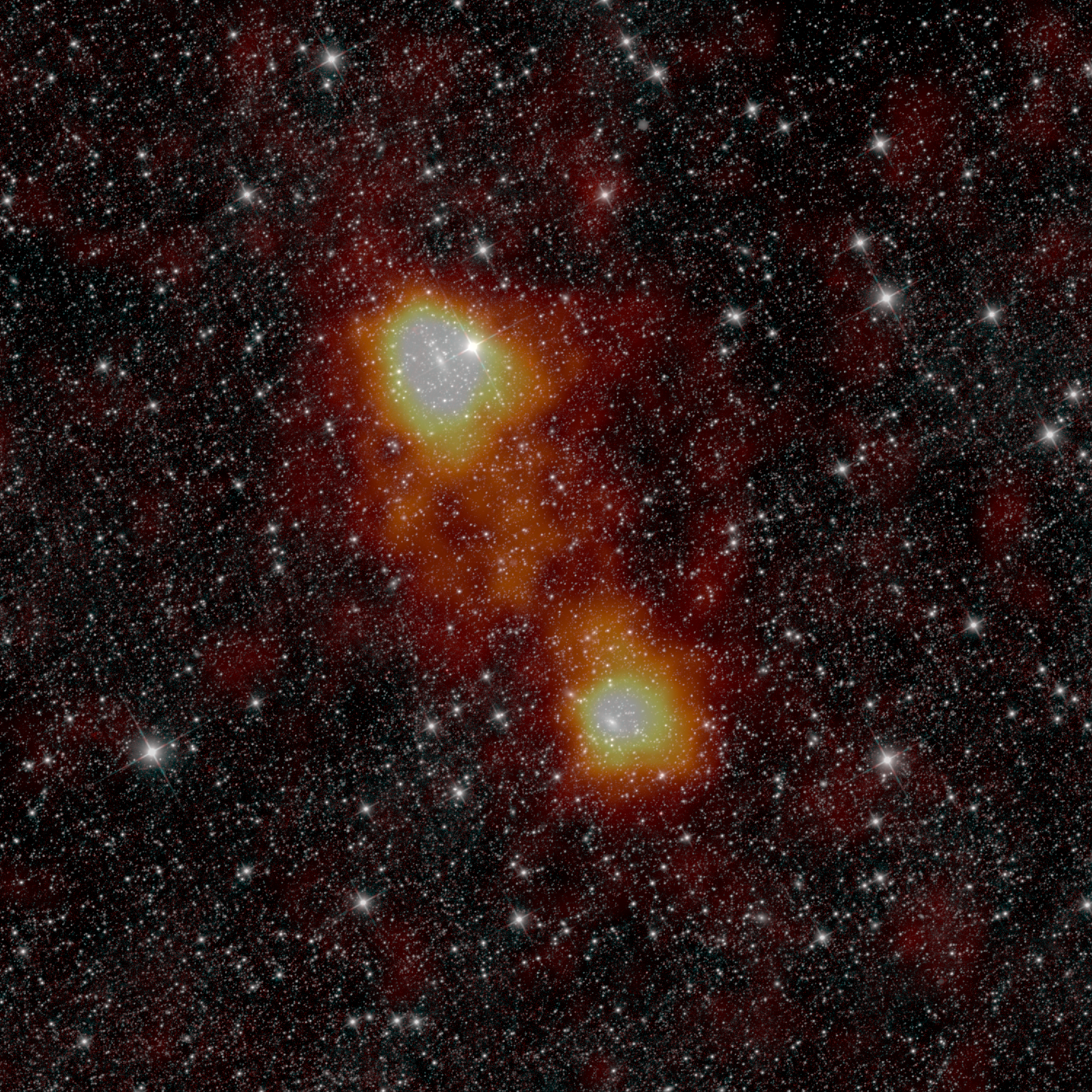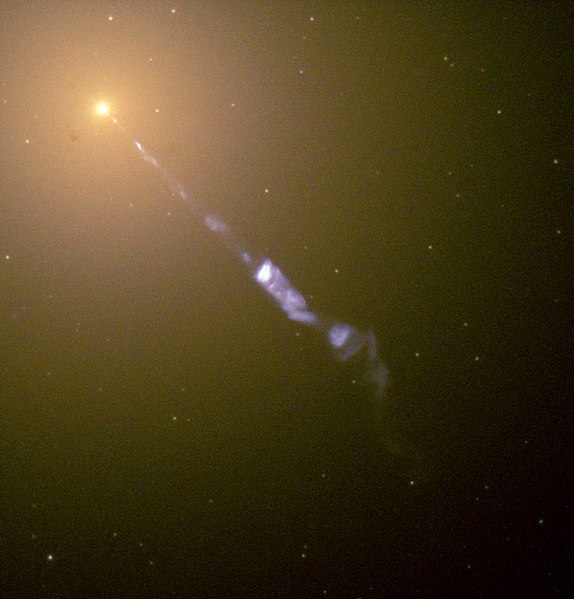The Millimetre Sky and the Cosmic Microwave Background [⯅ Top]
The main observables used by the Hincks group are wide-area surveys of the sky in millimetre (mm) wavelengths. The brightest signal over most of the sky at these wavelengths is the cosmic microwave background (CMB), the earliest light in the Universe. We are members of the Simons Observatory and the Atacama Cosmology Telescope collaborations, whose principal goal is to understand fundamental cosmology: what our Universe is like as a whole, how it has evolved over time and what the basic physics are that govern its behaviour.
Our group contributes to this central research area. Additionally, we specialise in a couple of exciting areas that use these mm data in new ways, as follows:
Tracing Cosmic Structure [⯅ Top]

The stars and galaxies you see in the night sky contain only a tiny fraction of all the stuff in the Universe. Less than 10% of all the atoms in the Universe live in these objects; the rest is in diffuse gas in the dark areas of the sky. And atoms only make up about 5% of the Universe: the rest is dark matter (~25%) and dark energy (~70%). This means that less than 0.5% of the mass-energy of the cosmos is in actually in stars and planets.
So: most atoms in the Universe are in a gas so diffuse that it is really hard to see. One of the best ways to see it, though, is in mm wavelengths. When the CMB light passes through the gas, some of the light scatters in a way that we can measure; the technical name for this phenomenon is the Sunyaev-Zeldovich effect (SZE).
To the right is an image we made using the SZE that reveals a larged quantity of hot gas forming a ‘bridge’ between two galaxy clusters. Here, the gas is tracing the ‘cosmic web’ of large scale structure in the Universe, where matter follows spindly filaments that connect in nodes that typically host lots of galaxies that are gravitationally bound into galaxy clusters. It is estimated that about 25% of all the atoms in the Universe—more than 3× the number in stars or planets—are in these filaments. In this particular system, comprising galaxy clusters named Abell 399 and Abell 401, the mass of the gas in the bridge is equivalent to about 50 billion suns, or 50 Milky Way galaxies, and yet it is so long and diffuse that there is only about 1 atom per square foot—far less than in the best vacuum we can make on Earth!
We work with several international collaborators to continue revealing this gas to understand basic properties of how our Universe is structured on its larger scales; we combine SZE measurements with other probes such as X-ray and radio observations to get a more complete picture of how the gas is moving and behaving.
The Variable Millimetre Sky [⯅ Top]

The night sky that you see appears immutable: it rotates every night as the earth spins on its axis, and it slowly rotates every year as the earth circles the sun, but the objects don't really change. However, the sky isn't as static as you might think. There are lots of interesting objects that you normally don't see with the naked eye, like pulsars and discs around giant black holes and exploding stars, that change rapidly and play a crucial role in structuring the Universe.
CMB surveys are opening up the mm domain of ‘time domain’ astrophysics. Although observatories like ACT and SO do not see the faintest objects, they observe about 40% of the sky several times a week, and thus have an advantage in terms of sheer quantity of objects that can be observed.
The most numerous point sources in our maps are active galactic nuclei (AGN). These are powered by supermassive black holes (SMBH) that generally live in the centre of galaxies. A lot of energy is generated in the accretion disc of material orbiting a SMBH, sometimes powering massive jets of material that can extend for thousands of light years (see figure). When such a jet is directed approximately towards us, we see its syncrotron radiation in the mm. And because the jet is a moving, turbulent object, the strength of the mm light varies over time. By studying these mm variations in thousands of AGN, we can learn a lot about the physics of these jets. AGN turn out to be really important in redistributing matter beyond galaxies, so they are also of interest for understanding the cosmology of large scale structure.
Pulsars, and their siblings magnetars, are a class of neutron stars, the extremely compact, dead relicts of large stars that exploded. Some such neutron stars spin rapidly and emit a beamed, ‘lighthouse’ type of light that in some cases happens to be pointing at us. In radio waves they create bright, rapid and extremely regular blips of light. (Magnetars are less regular.) We are searching for the mm emission of these objects, which, when compared to the radio and other types of light, will shed light on the mysterious emission mechanims of these astrophysical lighthouses.
Finally, there are plenty of other types of transients you can search for, and we work with our colleagues to search for distant, extremely high-energy explosions like gamma ray bursts, supernovae and tidal disruption events. Again, mm observations are expected to shed light on how exactly these explosions work.
The Radio Sky and 21-cm Intensity Mapping [⯅ Top]
An emerging observable for probing the large scale structure of the Universe is the 21-cm line emitted by neutral hydrogen. Since this gas tends to be in most galaxies, the intensity of the 21-cm signal is proportional to the distribution of matter in the Universe. And because we know its emission wavelength, the redshift of the gas, which is related to its distance, is immediately known based on the received wavelength. You can thus use the redshifted 21-cm emission intensity to make a 3D measurement of large scale structure. This technique is known as intensity mapping.
Our group is part of the Hydrogen Intensity and Real-Time Analysis eXperiment (HIRAX) project, which will be an extremely sensitive 21-cm intensity mapping experiment based in South Africa. In addition to intensity mapping, HIRAX will be an excellent instrument for detecting and monitoring transient and variable radio sources, such as fast radio bursts and pulsars.